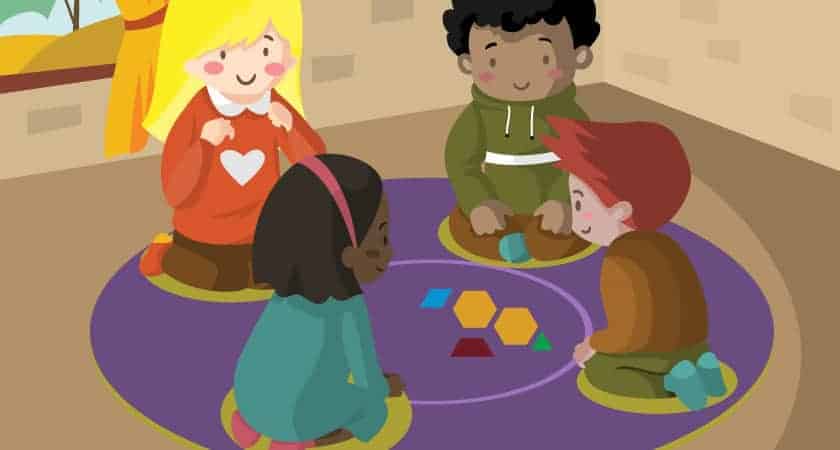What Are They?
Pattern blocks consist of geometric color-coded shapes: green equilateral triangles, blue rhombuses, red trapezoids, and yellow hexagons. The relationships among the side measures and the angle measures make it easy for your child to fit the blocks together to make tiling patterns that can completely cover a flat surface. The pattern blocks are designed so that all the sides of the shapes are 1-inch blocks, except the longer base of the trapezoid. The longer base is 2-inches. All the shapes have angles which are divisors of 360 degrees: 120 degrees, 90 degrees, 60 degrees, and 30 degrees.
Engage Exploration
The pattern block’s features encourage your child to investigate relationships among the shapes. The hexagon can be covered exactly by two trapezoids, 3 rhombuses, or 6 triangles. This is a lead-in to consider the fractional relationships to the whole. If your child considers the hexagon as a unit or the whole, then the trapezoid becomes ½, the rhombus 1/3, and the triangle 1/6. Likewise, if your child considers the triangle as the unit or the whole, then the hexagon has a value of 6.
Your child can develop hands-on familiarity and intuition about comparing fractions, finding equivalent fractions, changing improper fractions to mixed numbers and mixed numbers to improper fractions. Children also learn addition, subtraction, multiplication, and division, as well as multiplication and division of fractions just from using pattern blocks!
Beyond Numbers
Pattern blocks give your child a visual image essential for conceptual understanding of fraction algorithms. This allows your child to think beyond simply working with numbers. Your children need time to build, experiment and explore with pattern blocks. After starting there, K5 Gifted features lessons to help take the difficulty to the next level.
In the beginning, children use the pattern pieces to explore spatial relationships. Young children benefit from copying others’ designs. This allows children to recognize differences and similarities and to talk through their mathematical experiences related to geometrical reasoning. Talking aloud allows children to clarify and extend their reasoning. When investigating the perimeter of shapes made with pattern blocks, students can discover that shapes with the same area can have different perimeters and that shapes with the same perimeter can still have different areas.
Connect And Assess
When children use pattern blocks, you as a parent can take the opportunity to authentically assess your child’s conceptual understanding. An example would be having your child determine the perimeter of a shape by counting exterior sides of a unit.
Encourage your child to talk aloud about his or her strategies and thinking. Not only does this promote a healthy partnership between you and your child, but it engages the critical thinking processes of your child’s mind and will ultimately lead to a stronger understanding of the general concepts!
